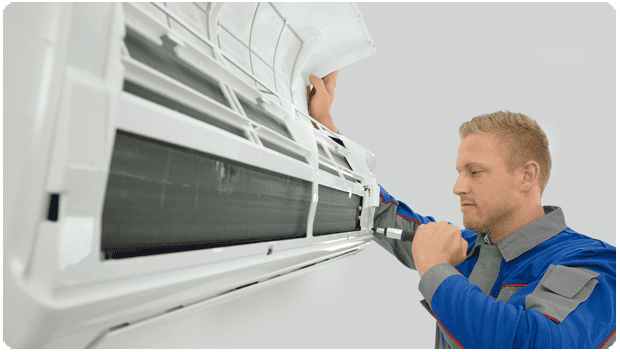Energy efficiency is a top priority in today’s world, and optimizing the performance of HVAC systems plays a significant role in achieving that goal. Control sensors are essential components of HVAC systems that contribute to energy efficiency by monitoring and regulating various parameters. In this article, we will explore the importance of control sensors in optimizing energy efficiency and delve into different types of sensors available in the market. From ACI sensors to Belimo sensors and Honeywell sensors, we will examine their functionalities and their impact on HVAC system performance.
Understanding Control Sensors in HVAC Systems
Control sensors are devices designed to measure and monitor specific parameters in HVAC systems. They provide valuable data that enables precise control and adjustment of HVAC components, ensuring optimal performance and energy efficiency. By accurately sensing and responding to environmental conditions, control sensors help HVAC systems maintain the desired comfort levels while minimizing energy consumption. These sensors can measure a wide range of variables such as temperature, humidity, pressure, and airflow. They play a critical role in regulating heating, ventilation, and air conditioning, ensuring that the systems operate efficiently and effectively. Control sensors work in tandem with other components in HVAC systems, such as thermostats and actuators, to create a balanced and responsive heating and cooling environment. By continuously monitoring and adjusting the HVAC system based on the input from control sensors, energy waste is minimized, and the system operates at peak efficiency.
Temperature Control Sensors
Temperature control sensors play a crucial role in HVAC systems by monitoring and regulating the temperature. Belimo sensors and Honeywell sensors are among the leading brands that offer reliable temperature control solutions. These sensors employ different technologies, such as thermocouples and resistance temperature detectors (RTDs), to accurately measure temperature. They ensure that HVAC systems maintain the desired temperature setpoints, preventing energy waste caused by overheating or overcooling.
Humidity Control Sensors
Humidity control sensors are responsible for monitoring and controlling the moisture levels in HVAC systems. These sensors utilize various technologies, such as capacitive sensing, to measure humidity accurately. By maintaining the ideal humidity levels, HVAC systems can enhance energy efficiency and prevent issues like condensation and mold growth.
Pressure Control Sensors
Pressure control sensors are designed to measure and regulate the pressure levels within HVAC systems. ACI sensors, for example, offer a range of options for pressure monitoring and control. These sensors utilize technologies like strain gauges and capacitive sensing to accurately measure pressure. By ensuring that the pressure remains within the specified range, HVAC systems can operate efficiently, preventing energy waste and potential equipment damage.
Flow Control Sensors
Flow control sensors enable the measurement and control of fluid flow rates in HVAC systems. ACI sensors, Belimo sensors, and Honeywell sensors provide reliable flow control solutions. These sensors utilize technologies like a turbine and magnetic flow sensing to accurately measure flow rates. By monitoring and adjusting the flow rates, HVAC systems can optimize energy efficiency by delivering the right amount of air or water for heating, cooling, or ventilation.
Optimizing Energy Efficiency with Control Sensors
The combined use of temperature, humidity, pressure, and flow control sensors in HVAC systems leads to significant energy efficiency improvements. By providing accurate data and facilitating precise control, these sensors enable HVAC systems to operate at their optimal performance levels. This optimization results in reduced energy consumption, lower utility costs, and a smaller environmental footprint. Case studies and real-world examples demonstrate how the implementation of control sensors has led to substantial energy savings and improved sustainability in various commercial and residential settings.
Best Practices for Implementing Control Sensors
To maximize the benefits of control sensors, it is essential to follow best practices during their implementation. Proper selection, installation, and calibration of ACI sensors, Belimo sensors, and Honeywell sensors are crucial for accurate and reliable performance. Each brand has its own specifications and requirements, so it is important to consult the manufacturer’s guidelines and recommendations. Additionally, working with experienced HVAC professionals who have knowledge and expertise in sensor installation is highly recommended.
During the installation process, it is important to ensure that the sensors are placed in optimal locations to capture accurate readings. Proper positioning can significantly impact the sensor’s ability to sense and respond to environmental changes effectively. Calibration of the sensors is another critical step to ensure accurate measurements. Regular maintenance and monitoring of the sensors are also important to identify any issues or performance degradation over time.
By following these best practices, HVAC systems can fully leverage the capabilities of control sensors, leading to improved energy efficiency, comfort, and overall system performance.
Conclusion
In conclusion, control sensors are indispensable tools for optimizing energy efficiency in HVAC systems. Whether it’s temperature, humidity, pressure, or flow control, these sensors enable precise monitoring and regulation, resulting in significant energy savings and environmental benefits. ACI sensors, Belimo sensors, and Honeywell sensors are reputable brands that offer a wide range of solutions to cater to different HVAC requirements. By embracing control sensors and implementing them effectively, building owners can create sustainable and energy-efficient environments while enjoying the benefits of reduced energy costs and enhanced occupant comfort.
By incorporating these control sensors into HVAC systems, building owners and users can achieve significant energy savings while maintaining optimal comfort levels. The data provided by these sensors allows for real-time adjustments and fine-tuning of HVAC components, ensuring that energy is used efficiently and wastage is minimized.
To fully leverage the benefits of control sensors, it is essential to follow best practices during implementation. This includes selecting the right sensors for specific applications and considering factors such as accuracy, compatibility, and durability. Proper installation and calibration are crucial for accurate performance, and regular maintenance and monitoring help to detect any issues and ensure long-term reliability.


